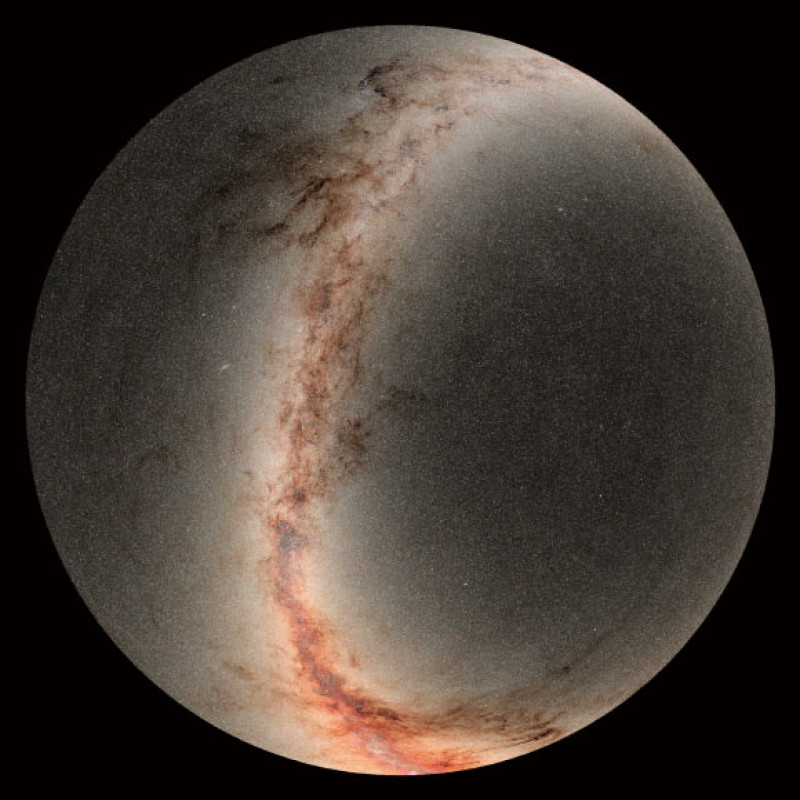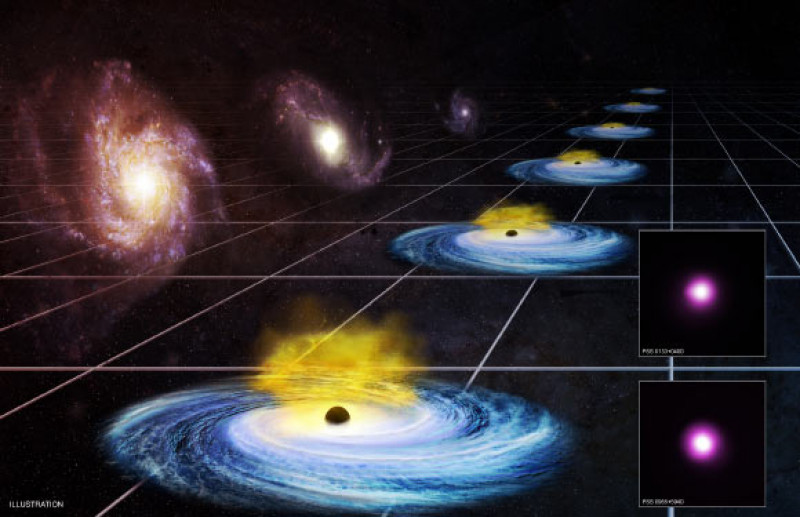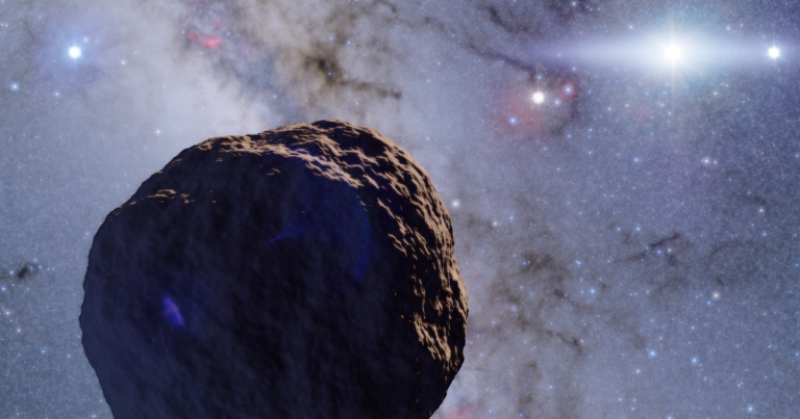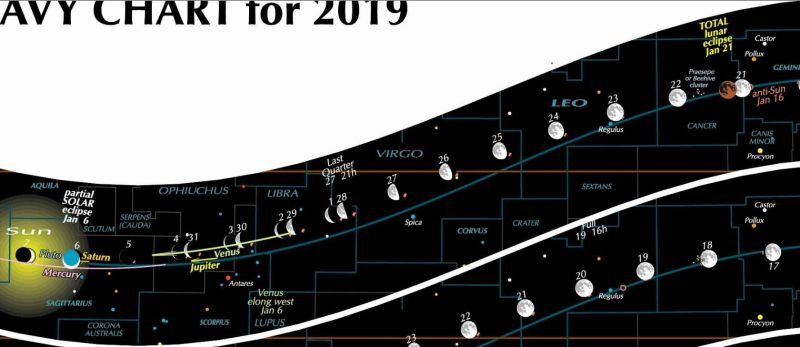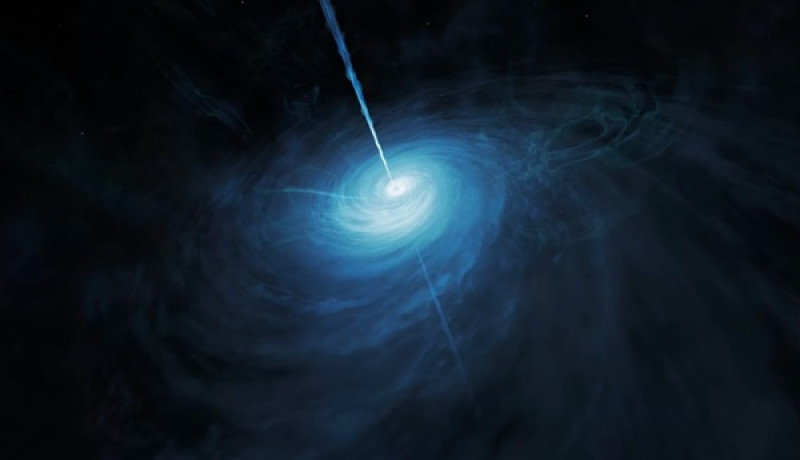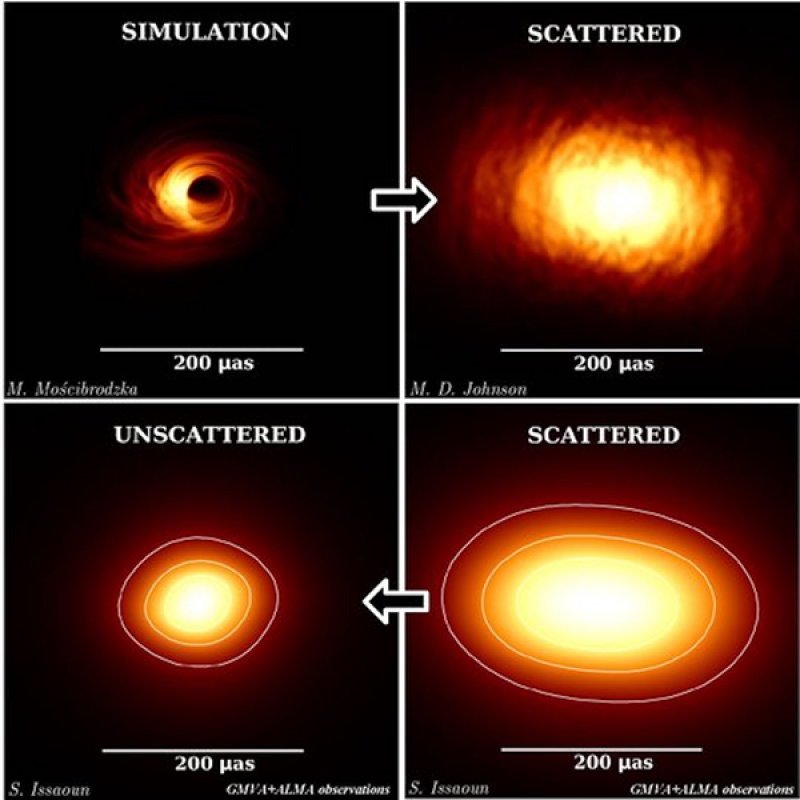News
Pan-STARRS Astronomers Issue Largest Astronomical Data Release Ever
Thursday, January 31st 2019 08:48 PM
The Pan-STARRS Observatory is located at the summit of Haleakalā, on Maui, Hawai’i.
It embarked on a digital survey of the sky in visible and near-infrared light in May 2010.
Pan-STARRS was the first survey to observe the entire sky visible from Hawai’i multiple times in many colors of light.
One of its goals was to identify moving, transient, and variable objects, including asteroids that could potentially threaten the Earth.
The survey took approximately four years to complete, scanning the sky 12 times in five filters.
The second data release, Pan-STARRS DR2, provides, for the first time, access to all of the individual exposures at each epoch of time.
This will allow astronomers and public users of the archive to search the full survey for high-energy explosive events in the cosmos, discover moving objects in our own Solar System, and explore the time domain of the Universe.
“Pan-STARRS DR2 represents a vast quantity of astronomical data, with many gre...
Read More
Read More
Dark Energy May Have Varied over Cosmic Time, New Study Suggests
Thursday, January 31st 2019 08:47 PM
According to the leading scenario, our Universe contains only a few percent of ordinary matter. One quarter of the cosmos is made of the elusive dark matter, which we can feel gravitationally but not observe, and the rest consists of the even more mysterious dark energy — first discovered about 20 years ago — that is driving the current acceleration of the Universe’s expansion.
This model is based on a multitude of data collected over the last couple of decades, from the Cosmic Microwave Background (CMB) — the first light in the history of the cosmos, released only 380,000 years after the Big Bang and observed in unprecedented detail by ESA’s Planck mission — to more ‘local’ observations.
The latter include supernova explosions, galaxy clusters and the gravitational distortion imprinted by dark matter on distant galaxies, and can be used to trace cosmic expansion in recent epochs of cosmic history — across the...
Read More
Read More
Astronomers Find Rare, Distant Space Object With $3,000 Telescope
Wednesday, January 30th 2019 11:29 PM
Distant Space Rocks
The Kuiper Belt is a collection of space rocks beyond the outer reaches of Neptune, like Ultima Thule. Astronomers predict their age to be about as old as the Solar System itself.
Kuiper Belt objects are extremely difficult to observe because of that distance, even using the most expensive telescopes in the world. That’s why it’s extraordinary that a research team at the National Astronomical Observatory in Japan just spotted one — with a telescope that costs less than a fancy TV.
Big Discovery, Tiny Budget
The team discovered the 0.8 mile (1.3 km) wide object using a telescope that, as Motherboard pointed out, costs about $3,000. They augmented its power with specialized cameras and an astrograph, which is an instrument for wide field astronomical surveys — and the DIY approach paid off: the team’s research was published in the pre...
Read More
Read More
The future of space-based astronomy may depend on two large ground-based telescopes
Tuesday, January 29th 2019 11:22 PM
At the largest conference of astronomers in the United States, the biggest astronomy mission under development was virtually a no-show.
The partial government shutdown that started Dec. 22 kept NASA civil servants from attending the winter meeting of the American Astronomical Society (AAS) in Seattle in early January. That included those officials managing the James Webb Space Telescope, a mission treated by many astronomers with both anticipation and trepidation: the former because of its scientific potential, the latter because of its latest round of cost overruns and schedule delays.
The absence of the space agency meant the cancelation of one town hall meeting devoted overall NASA astrophysics programs and another on JWST in particular. Northrop Grumman, the telescope’s prime contractor, also kept a low profile at the conference; in a break with past years, it declined requests for interviews with company officials to talk about the status of the telescope.
But the absence...
Read More
Read More
The moon at mid-arch from full to new
Monday, January 28th 2019 08:11 PM
The blue line is the ecliptic, curved in this projection in which the celestial equator – the red line – is straight.
On January 21, 2019, ascending node through the ecliptic coincided with full moon, so there was a total lunar eclipse. Descending node on February 3 will come close to new moon – though not as close as on January 6, when there was a partial solar eclipse.
Halfway between, at last quarter on January 27, the moon is at the top of its arch, about 5 degrees (its orbital inclination) north of the ecliptic.
A result of this is that the libration is at a maximum for the year. This is interesting, though, as we’ll explain, of limited observational advantage.
Libration is the moon’s apparent “rocking,” caused by its slightly inclined and elliptical orbit. It’s indicated in our chart by a red tab on the moon’s limb (edge). The tab is at the part of the limb where libra...
Read More
Read More
Guide to the 2019 South American eclipse
Saturday, January 26th 2019 12:21 PM
Can you feel the excitement? We can. Millions of people traveled to witness the total solar eclipse August 21, 2017, and when it was over, many of them asked: When’s the next one?
As it turns out, the next total eclipse of the Sun occurs July 2, 2019. Its path starts in the South Pacific near Pitcairn Island and ends over land, having touched just two countries: Chile and Argentina.
Totality of the 2019 eclipse will be 70 percent longer than the 2017 event. This is because Earth is not always at the same distance from the Sun, and the Moon is not always the same distance from Earth. Since the Earth-Sun distance varies by 3 percent and the Moon-Earth distance by 12 percent, the length of totality fluctuates from one eclipse to the next. So, while the eclipse of August 2017 had a totality lasting 2 minutes 40 seconds, the next one will be a bit longer.
Maximum eclipse, a worthy 4 minutes 33 seconds, occurs over water 665 miles (1,070 kilometers) north of Easter Island &m...
Read More
Read More
The Sky This Week from January 25 to February 3
Friday, January 25th 2019 12:48 PM
Friday, January 25One of the sky’s most familiar constellations rules January’s sky from dusk until around 2 a.m. local time. Orion the Hunter appears conspicuous in the southeast after darkness falls and climbs highest in the south around 9 p.m. It then stands halfway to the zenith from mid-northern latitudes. The night sky’s brightest star, Sirius, trails about an hour behind Orion.Saturday, January 26
Mars continues to put on a nice show in January. Look for the Red Planet halfway to the zenith in the southwestern sky as darkness falls. The world shines at magnitude 0.8 against the much dimmer stars of southern Pisces. Tonight, Mars slides 0.9° south of the 4th-magnitude star Epsilon (ε) Piscium. A telescope reveals the planet’s 6"-diameter disk, but you likely won’t see any surface features unless you have exceptionally good seeing.
Sunday, January 27Last Quarter Moon occurs at 4:10 p.m. EST. The Moon doesn’t rise until nearly 1 a...
Read More
Read More
The MaNGA Stellar Library: Collecting our galaxy’s stars 21 The MaNGA Stellar Library: Collecting our galaxy’s stars
Thursday, January 24th 2019 04:27 PM
Imagine going to a library where the books aren’t books at all, but detailed information on stars throughout our galaxy. Stars are the building blocks of clusters and galaxies; the information contained in their light provides details on temperature, composition, age, and motion. Now, a unique database called the MaNGA Stellar Library (after the Sloan Digital Sky Survey’s Mapping Nearby Galaxies at Apache Point Observatory [MaNGA] project) provides the perfect starting point for astronomers to better understand complex galaxies by breaking them down into their simplest parts.
Stellar spectra
The MaNGA survey itself is aimed at understanding the inner structure and workings of galaxies. To do so, the survey observes galaxies to gather spectra —spread-out light that provides details such as composition and motion. The survey uses plates, which are thin metal discs drilled with holes at the position of each galaxy astronomers plan to observe, into which small bundles...
Read More
Read More
Astronomers spot the brightest quasar ever discovered in the early universe
Wednesday, January 23rd 2019 12:59 PM
Astronomers spotted the brightest quasar ever discovered in the early universe, as depicted in this striking artist’s impression. And now it’s offering astronomers a rare zoomed-in glimpse at how the earliest galaxies formed.
Quasars are active supermassive black holes that lurk at the centers of galaxies. As they feed on nearby material, these black holes launch extremely bright jets out into the cosmos.
A team of astronomers led by Xiaohui Fan of the University of Arizona spotted this object, dubbed J043947.08+163415.7, using observations from ground-based telescopes in Hawaii. A stroke of luck aided in the discovery. While the quasar shines as bright as 600 trillion suns, it also sits a whopping 12.8 billion light-years away. So it was only visible because the gravity from an intervening galaxy bent and magnified the quasar’s light, an effect called gravitational lensing. That boosted its brightness in our earthly instruments by...
Read More
Read More
Radio jets from the Milky Way’s black hole could be pointing right at Earth
Tuesday, January 22nd 2019 02:54 PM
We’ve spent decades trying to decode our supermassive black hole, but crucial clues could’ve been in front of us all along.Using an array of 13 radio telescopes, astronomers from the Max Planck Institute were able to home in on Sagittarius A* (pronounced A-star), the region that houses the Milky Way’s supermassive black hole. And once they’d cleared out the noise of scattered light that surrounds it, they found that the powerful radio emission that blasts from the black hole is coming from just a tiny area, which could be aimed right at Earth. The research was published Monday in The Astrophysical Journal and, if confirmed, could shed new light on Sgr A* and its radio jets.
Black Hole Blasts
Supermassive black holes are pretty common in our universe, sitting at the hearts of most large galaxies. Their strong gravitational fields allow them to suck in and obliterate objects that get too close to them. And while they absorb most of this celestial...
Read More
Read More
